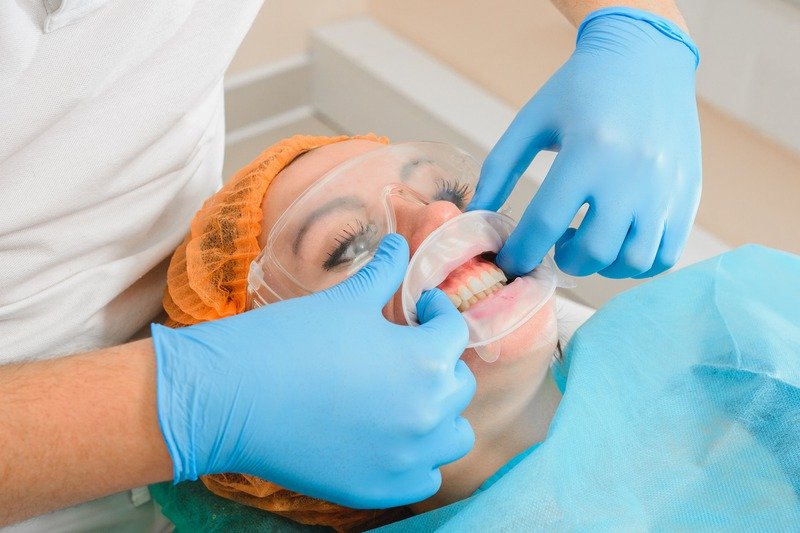
Taking care of your gums is essential for a healthy smile. If you have gum issues, there are several treatment options to consider. Good oral hygiene, such as regular brushing and flossing, is foundational. Professional cleanings by a dentist can remove plaque and tartar. For more serious gum disease, scaling and root planing can be cleaned below the gumline. Antimicrobial mouth rinses can reduce bacteria. In severe cases, surgery may be needed to restore damaged tissues. Always consult with a dental professional to choose the best treatment for your condition.
Why Gum Health Matters
Understanding the importance of gum health is crucial before exploring treatment options. Healthy gums act as a protective barrier for your teeth and jawbone, maintaining your overall oral health and smile. If gums are neglected, they can become susceptible to issues like gum disease, which can progress to serious conditions such as tooth loss. Therefore, keeping gums healthy is essential for preventing complications and ensuring the longevity of your teeth. Prioritizing gum care is a pivotal step in maintaining a confident and enduring smile.
Signs You Might Need Gum Treatment
Recognizing the signs of gum disease early on can make a significant difference. Here are some symptoms to watch out for:
-
Swollen or puffy gums
-
Gums that bleed easily, especially during brushing or flossing
-
Persistent bad breath
-
Receding gums, making your teeth appear longer
-
Loose or shifting teeth
Consulting with a Dentist
If you notice any of these signs, it’s a good idea to consult with a dental professional specializing in general dentistry in Nepean, ON. An expert can help diagnose the problem and suggest appropriate treatment options. They might also ensure you receive guidance tailored to your specific condition.
Non-Surgical Treatment Options
Deep Cleaning
Deep cleaning, also known as scaling and root planing, is often the first step in treating early gum disease. It involves removing plaque and tartar buildup from above and below the gum line. This process helps reduce inflammation and promote gum reattachment to teeth.
Antibiotics
Your dentist may prescribe antibiotics to treat the infection. These can be oral antibiotics or topical gels applied directly to the gums. They work to eliminate bacteria and reduce inflammation.
Laser Therapy
Laser therapy is a less invasive option that’s gaining popularity. The laser targets infected tissue and bacteria with precision, minimizing gum damage and promoting faster healing.
Surgical Treatment Options
Flap Surgery
For more advanced gum disease, flap surgery might be recommended. This procedure involves lifting the gums to remove tartar buildup and then suturing them back into place. It helps reduce gum pockets where bacteria thrive.
Bone and Tissue Grafts
Gum disease may have resulted in bone or tissue loss, which may require grafts. Bone grafts help regrow lost bone, while tissue grafts reinforce receding gums.
Guided Tissue Regeneration
This technique involves placing a small mesh-like material between the bone and gum tissue. It encourages new bone and tissue growth, helping preserve your teeth’s support structures.
Maintenance after Treatment
After gum treatment, maintaining excellent oral hygiene is crucial. Regular dental visits and professional cleanings help prevent the recurrence of gum disease. Brush your teeth at least twice daily and floss regularly to remove plaque. Consider using an antiseptic mouthwash to reduce bacteria. A balanced diet, limiting sugary foods, also supports oral health. Staying consistent with these habits ensures healthier gums and lowers the risk of further issues, protecting your overall dental well-being.
Lifestyle Changes for Healthier Gums
Simple lifestyle changes can make a big difference. Here are some tips:
-
Brush your teeth at least twice a day with a soft-bristled toothbrush.
-
Floss daily to remove plaque between teeth.
-
Use an antiseptic mouthwash to reduce bacteria.
-
Avoid smoking or using tobacco products.
-
Maintain a balanced diet rich in vitamins and minerals to support gum health.
Over-the-Counter Products to Consider
Over-the-counter products like specialized toothpaste and mouth rinses play a crucial role in maintaining gum health. They are specifically designed to combat plaque and gingivitis, helping to prevent gum disease. Although these products are not a substitute for professional dental treatment, they effectively complement your daily oral care routine.
Regular use of these products can enhance gum health by reducing harmful bacteria and inflammation. However, it’s still important to visit a dentist regularly for check-ups and professional cleanings to ensure optimal oral health.
Seeking Professional
Seeking professional advice and gum treatment Nepean can be invaluable. A local dentist offers personalized care, guiding you through the best options for your gum health and ensuring effective treatment tailored to your needs.
Final Thoughts
Taking care of your gums is a vital component of overall dental health. Whether you opt for non-surgical methods or require more intensive surgical treatment, addressing gum issues can pave the way for a healthier smile. Remember, regular dental visits play a critical role in preventing and managing gum disease. Prioritize your gum health, and you’ll be well on your way to maintaining a bright and confident smile.




